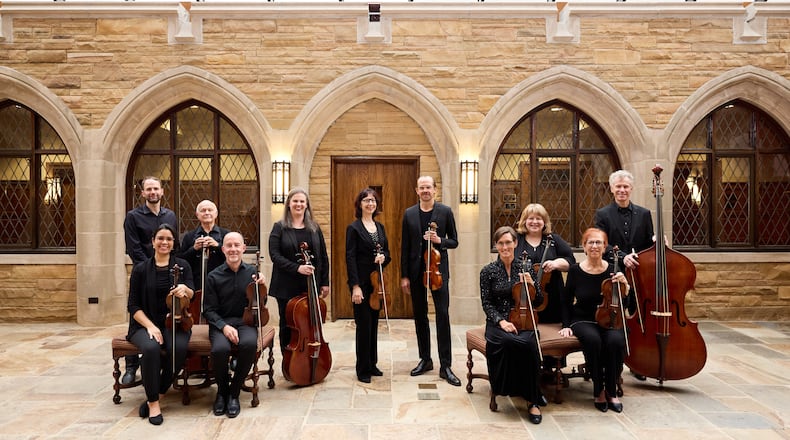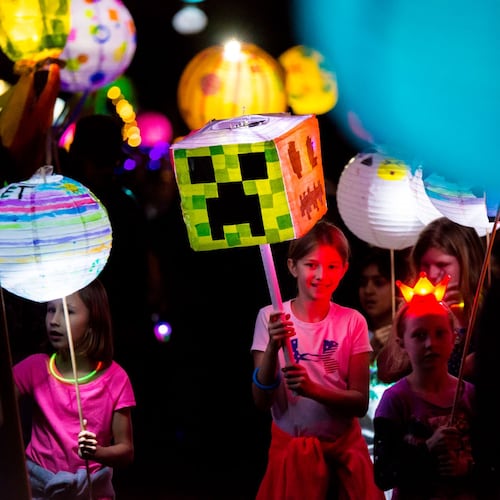This story was originally published by ArtsATL.
Co-choreographing the Atlanta Baroque Orchestra’s upcoming production of Henry Purcell’s ”Dido and Aeneas” returned George Staib to what first drew him to dance.
“My heart was always moved by Baroque music, and it still is,” Staib, artistic director of staibdance and faculty in Emory University’s dance program, told ArtsATL. “I just love it, and I love to see the buoyancy inside these dancers as they move to it.”
For his collaborator, Sarah Hillmer, executive director of staibdance and founder and director of ImmerseATL, the opera was a harder sell.
“Baroque opera is not my cup of tea,” she said. “But when we started on the dance, it was an inroad, a way for me to get into the music. This production offers the audience several inroads like that, whether it’s through the dance, the story, the costumes or the gorgeous performance spaces.”
The production will premiere at Emory University’s Glenn Memorial United Methodist Church on February 2 and 3, and move to Spivey Hall on February 6.
Credit: Photo by Tav Daly
Credit: Photo by Tav Daly
Billed as Atlanta Baroque’s “most ambitious project to date,” this complete staging of Henry Purcell’s late 17th century opera is not an attempt at historical reconstruction. Rather, the production and stage design of Atlanta Baroque’s “Dido and Aeneas” lean into the spirit of Baroque art as a sublime juxtaposition of disparate and sometimes oppositional elements.
“We wanted the choreography to have a contemporary aesthetic,” Staib said. “At the same time, I didn’t want to lose the classical, brooding atmosphere.”
Composed between 1680 and 1689, Purcell’s “Dido and Aeneas” retells the tragic love story, drawn from Virgil’s “Aeneid,” that unfolds between Aeneas, the legendary founder of Rome, and Dido, Queen of Carthage.
Overlaid on that classical scaffolding are thematic elements that Purcell drew from his more contemporary sources, including the duties of a monarch to her kingdom, the dangers presented by male strangers who charm eligible young women and the temptations of strong drink and dark sorcery.
Costume designer John Merritt has updated the opera’s look while maintaining the fantasy and pageantry of Purcell’s musical reimagining of the classical world. “It’s like haute couture, exposed,” Hillmer said. “The costumes are elaborate and slightly deconstructed at the same time. Really elegant, but with an eyebrow-raising quality that also makes them more wearable, so that everyone — dancers, singers and musicians — can move around in them.”
In Mark Morris’ iconic contemporary dance adaptation of Purcell’s opera, the entire stage was reserved for the dancers, with the singers and musicians relegated to the pit. In contrast, for this production, Staib and Hillmer said the dancers complement and even engage with the musicians, lead singers and the opera’s chorus who share the performance space with them.
Sometimes, the dancers physically embody the main characters’ emotional journey. At other times, they enact imagined or potential interactions between the two lovers. Sometimes, they are bit players — witches, pirates, courtiers or entertainers — and occasionally they move set pieces, or become part of the scenery themselves in order to contextualize or propel the action onstage.
Credit: Photo by Daylilies Photography
Credit: Photo by Daylilies Photography
“Sarah has created this beautiful movement vocabulary that is so graciously physical,” Staib said. “It can be elevated, but it also had to be something the lead singers and chorus could step into, since they are sometimes joining the dancers in the movement.”
Hillmer said she was aiming for an aesthetic that is simultaneously sculptural and dynamic. She wanted each gesture to look like it comes from a deep well or a source of pressure, a force channeled through a beautiful, ornate statue until it fractures.
Like the costumes, the dance sequences ArtsATL observed during rehearsal combine old and new, defying attempts at historical or genre classification.
Hillmer and Staib constructed a palimpsest — as opposed to a mashup or remix — of traditional courtly dance, ballet and modern. Hints of the lines, synchronization, precisely geometrical spatial relationships, occasionally even the stiff formality of ballet and court dance, surface and submerge like ghostly traces within movement that is otherwise grounded, fluid and unabashedly, sensuously modern.
The dance fills to capacity the metrical structure laid down in Purcell’s score. Phrases are quick, articulated and ornate, but not overwrought or gaudy. Almost-bourrées (a traditional French dance in fast duple time) and deep Graham-inspired triplets transition between sections of playful contact work.
The “Dido and Aeneas” project freed Staib and Hillmer artistically, even while it presented structural constraints and technical challenges. “I fell back in love with wild dancing that is of the moment, like a delicious bit of cotton candy,” Staib said. “It doesn’t have to be clever 50 years from now.”
Hillmer agreed. “It’s like a really nice chocolate, the kind you can sit with and savor,” she said. “It’s a beautiful experience to make something meant to taste good, to feel good, for audience and dancers alike.”
Julie Andrijeski, artistic director of the Atlanta Baroque, is concertmaster. In addition to choreographing the dance, Staib is providing blocking and stage direction for the lead singers and chorus, and Hillmer has assisted with production management. This is staibdance’s second collaboration with the orchestra.
Guest artists Hannah De Priest (soprano, Dido), Brian Giebler (tenor, Aeneas), Michael Galvin (bass baritone, Sorceress) and Andréa Walker (soprano, Belinda) will sing the lead roles. Current and former members of the Georgia State University Choirs, directed by Deanna Joseph, GSU Professor of Music and Director of Choral Activities, will perform the chorus.
::
Robin Wharton studied dance at the School of American Ballet and the Pacific Northwest Ballet School. As an undergraduate at Tulane University in New Orleans, she was a member of the Newcomb Dance Company. In addition to a Bachelor of Arts in English from Tulane, Robin holds a law degree and a Ph.D. in English, both from the University of Georgia.
Credit: ArtsATL
Credit: ArtsATL
MEET OUR PARTNER
ArtsATL (www.artsatl.org), is a nonprofit organization that plays a critical role in educating and informing audiences about metro Atlanta’s arts and culture. Founded in 2009, ArtsATL’s goal is to help build a sustainable arts community contributing to the economic and cultural health of the city.If you have any questions about this partnership or others, please contact Senior Manager of Partnerships Nicole Williams at nicole.williams@ajc.com.
About the Author
Keep Reading
The Latest
Featured




